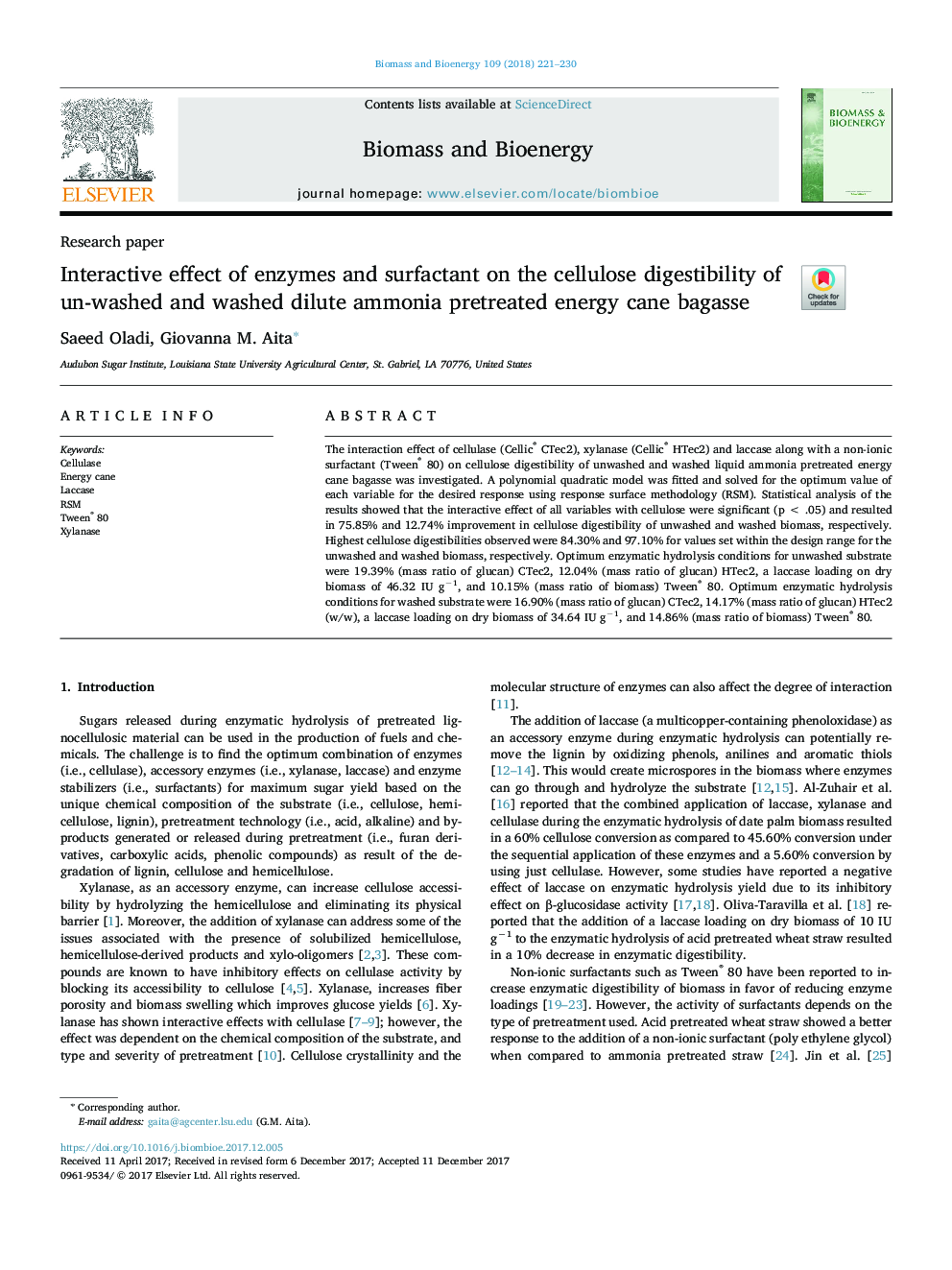| Article ID | Journal | Published Year | Pages | File Type |
|---|---|---|---|---|
| 7063031 | Biomass and Bioenergy | 2018 | 10 Pages |
Abstract
The interaction effect of cellulase (Cellic® CTec2), xylanase (Cellic® HTec2) and laccase along with a non-ionic surfactant (Tween® 80) on cellulose digestibility of unwashed and washed liquid ammonia pretreated energy cane bagasse was investigated. A polynomial quadratic model was fitted and solved for the optimum value of each variable for the desired response using response surface methodology (RSM). Statistical analysis of the results showed that the interactive effect of all variables with cellulose were significant (pâ¯<â¯.05) and resulted in 75.85% and 12.74% improvement in cellulose digestibility of unwashed and washed biomass, respectively. Highest cellulose digestibilities observed were 84.30% and 97.10% for values set within the design range for the unwashed and washed biomass, respectively. Optimum enzymatic hydrolysis conditions for unwashed substrate were 19.39% (mass ratio of glucan) CTec2, 12.04% (mass ratio of glucan) HTec2, a laccase loading on dry biomass of 46.32 IU gâ1, and 10.15% (mass ratio of biomass) Tween® 80. Optimum enzymatic hydrolysis conditions for washed substrate were 16.90% (mass ratio of glucan) CTec2, 14.17% (mass ratio of glucan) HTec2 (w/w), a laccase loading on dry biomass of 34.64 IU gâ1, and 14.86% (mass ratio of biomass) Tween® 80.
Related Topics
Physical Sciences and Engineering
Chemical Engineering
Process Chemistry and Technology
Authors
Saeed Oladi, Giovanna M. Aita,
